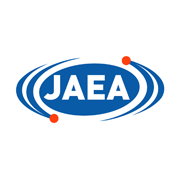Special Team for RI Heat Source Development
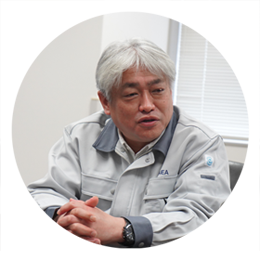
Effective use of heat-generating
waste as a heat source
Special Team for
RI Heat Source Development
Team Leader /
Masahide TAKANO
Purpose / Mission
The heat and radiation produced by radioactive waste can serve as a semi-permanent, maintenance-free energy source in harsh environments where access is difficult.
Radioactive Isotope (RI) batteries are one example. The special team for RI heat source development aims to provide RI as an energy source to society by developing technologies for stabilizing and sealing radioactive materials.
Examples of applications for semi-permanent power supply development
We will develop heat retention sources and semi-permanent power supplies designed to operate maintenance-free for several decades, potentially up to 100 years, contributing to advancements and discoveries in science and technology across various fields beyond nuclear.
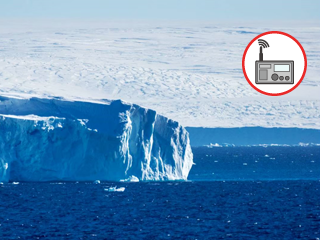
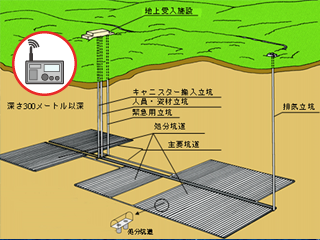

Mechanism of Semi-permanent Power Supply
Americium(241Am)
- An alpha decay nuclide with a half-life of 432 years
- Produced by beta decay of 241Pu → A few percent contained in the stored Pu
- Although it emits strong gamma rays, it is easy to shield due to their low energy.
- Thermal power of 1 W with 10 g of Am
Power Supply using Heating Element
- Add an additive to the Am oxide powder to stabilize its crystal structure into cubic crystals and bake it into pellet form.
- Place the pellets into metal pins, then seal them by welding.
- Insert the required number of pins into the block-shaped base material → Heating element
- Combine the heating element with a thermoelectric conversion device to create a semi-permanent power supply.
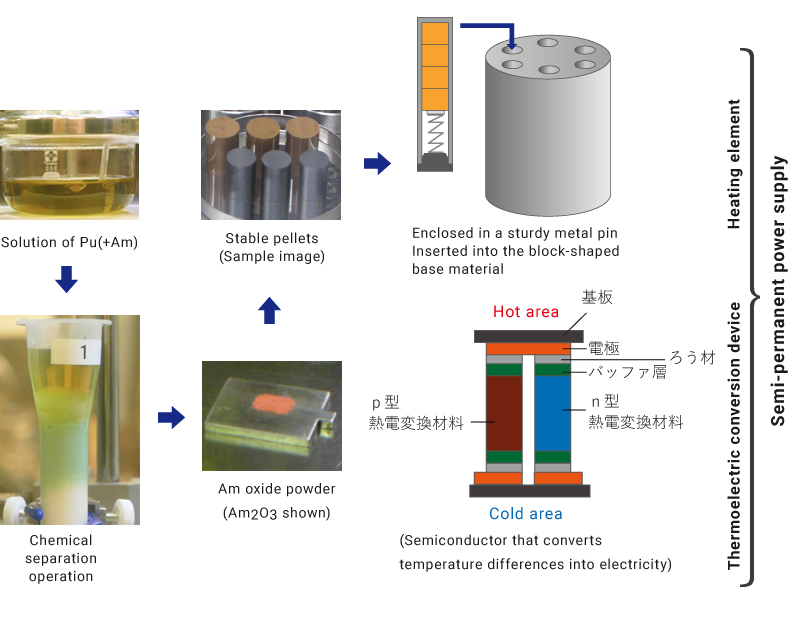
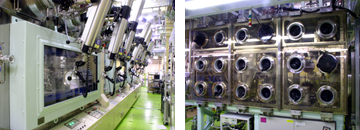
Iron shielded cell for handling Am (left) Shielded glove box (right)
The study has been conducted through joint research among three organizations: JAEA, responsible for the Am heating element; National Institute of Advanced Industrial Science and Technology, which focuses on thermoelectric conversion devices; and Japan Aerospace Exploration Agency, tasked with space utilization.

